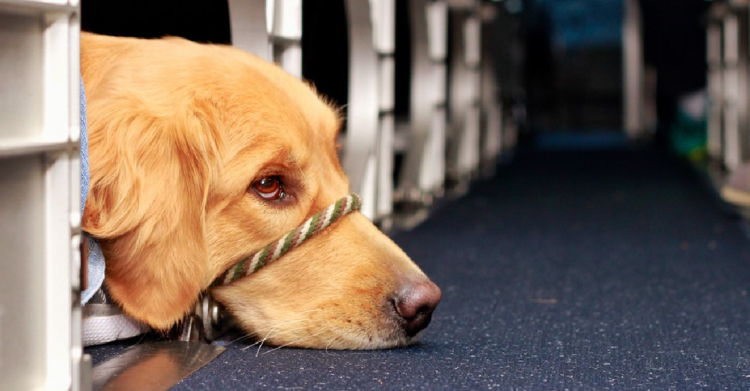For years now we’ve been seeing more and more stories about people bringing some pretty crazy animals into plane cabins by calling them their “Emotional Support Animal” (ESA).
There have been viral stories of peacocks , ducks , and one very tragic hamster , but even ESAs that are dogs and cats have been known to cause problems.
While an ESA should be specifically recommended by a person’s doctor, with proof of that provided, there are more and more cases of people abusing the system.
We’ve probably all known someone who didn’t want the stress and cost of having their pet travel in the hold so they decided to find a way to get the animal “certified” as an ESA.
The fact that ESAs travel for free was an even greater incentive to many.

This trend has increased the number of incidents involving untrained animals in airplane cabins and the US Department of Transportation (DOT) has been working to solve this tricky issue.
In the last couple of years, they instituted an interim guidance to crack down on the craziest problems while they worked on a final ruling.
That statement indicated that in order to ensure that people with legitimate support and service animals wouldn’t be negatively affected, they would focus their enforcement on the three most common support species: dogs, cats, and miniature horses.
The rest was left up to the discretion of the individual airlines.

They had to decide how and when to impose rules regarding other animals and where the line between Service Animal and Emotional Support Animal should be drawn.
And the airlines were quick to take action.

After citing an 84% increase in animal-related incidents in just two years, Delta cracked down in 2018, with other airlines following suit.
This led to fewer incidents, but also headaches for passengers trying to navigate the different rules depending on the airline.
However, starting January 2021, the DOT’s newest ruling will finally give blanket guidance for all airlines.

Where the former rules failed to draw distinct definitions for what is considered an ESA and what is a Service Animal, the new one does, meaning airlines can now refuse to accommodate ESAs without being accused of discrimination.
Per the new rule , a service animal is only “a dog that is individually trained to do work or perform tasks for the benefit of a person with a disability.”
Of course, not all disabilities are visible and airlines are still expected to understand the nuances of need.
Though it specifies that ESAs are no longer considered service animals, the statement makes sure to say that airlines must treat psychiatric service animals the same as those for physical disabilities.
A veteran with PTSD may not “look” like they need a service animal at first glance, for example.
Training has been developed to allow flight staff to tell the difference between a properly trained service animal and a pet in a vest.

Additionally, airlines are now allowed to require that passengers provide completed DOT service animal form(s) 48 hours in advance and create reasonable rules about the maximum size of a service animal and its expected behavior while on board.
While the new rules raise some worries for those relying on their animals for legitimate mental health needs, for most people, it’s a sigh of relief.
Hopefully the stipulation in the new rules around psychiatric service animals will help separate the real need from those who have been abusing the former system for the sake of a free pet ride.
h/t: CNN , Department of Transportation

















































